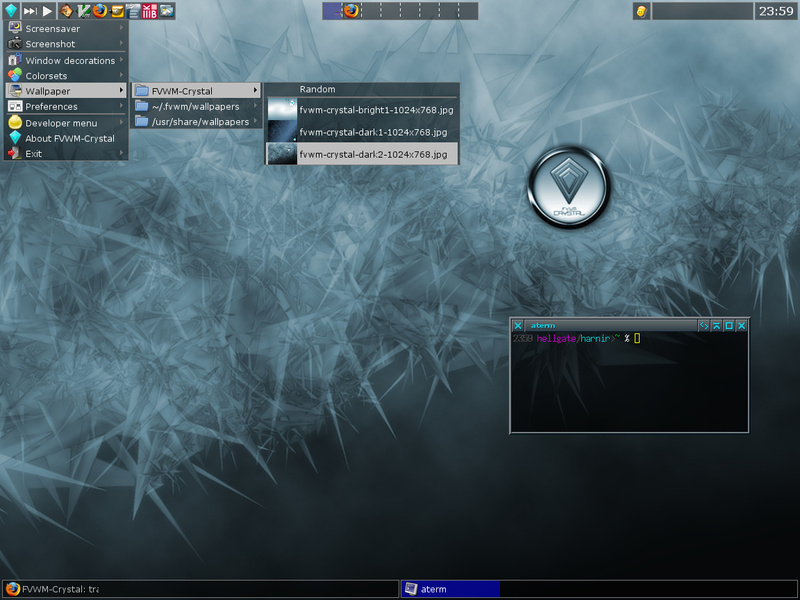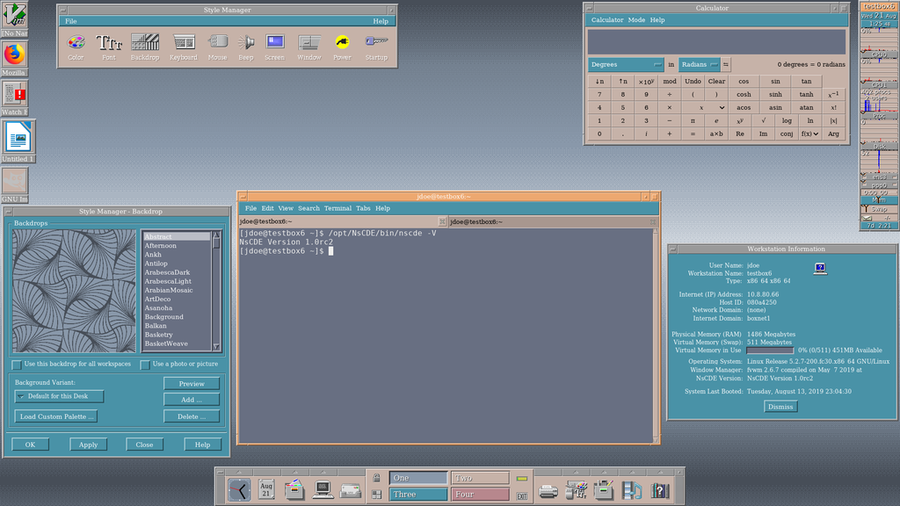F? Virtual Window Manager

Fvwm is a virtual window manager for the X windows system. It was originally a feeble fork of TWM by Robert Nation in 1993 (fvwm history), and has evolved into the fantastic, fabulous, famous, flexible, and so on, window manager we have today.
Fvwm is a ICCCM/EWMH compliant and highly configurable floating window manager built primarily using Xlib. Fvwm is configured using a configuration file, which is used to configure most aspects of the window manager including window looks, key bindings, menus, window behavior, additional modules, and more. There is a default configuration file that can be used as a starting point for writing one's own configuration file.
Fvwm is a light weight window manager and can be configured to be anything from a small sleek window manager to a full featured desktop environment. To get the most out of fvwm, one should be willing to read the documents, and take the time to write a custom configuration file that suites their needs. The manual pages and the fvwm wiki can be used to help learn how to configure fvwm.
Need Help?
Looking for help configuring, using, or developing Fvwm, check out the following options:
Getting Fvwm
Fvwm3 is the currently supported release of fvwm, and fvwm version 2 is no longer supported. Fvwm3’s key new feature is full RandR support for multihead setups, along with a new DesktopConfiguration that allows independent virtual desktops for each monitor. Here is a list of key differences between fvwm2 and fvwm3 along with tips to upgrade an fvwm2 config to an fvwm3 config.
The current release of fvwm3 is version 1.1.0. Fvwm3 can be installed in one of the following ways:
- Many operating systems provide a “fvwm3” package. Note, the “fvwm” package most likely refers to fvwm version 2.
- Build the current release fvwm3 version 1.1.0 from the source tarball.
- Clone and build the fvwm3 main branch.
- Build a Debian .deb package from the fvwm3 source.
Report fvwm3 bugs using the github issues tracker.
Configuring Fvwm
Fvwm starts from a minimal configuration and allows users to configure as much or little of their desktop as desired. Starting with Fvwm 2.6.7 a default configuration is provided to give users a starting point that can be edited instead of configuring from scratch.
When coupled with third party software and custom scripts, Fvwm becomes a powerful tool to build a full desktop environment from. If you want a preconfigured desktop environment using Fvwm, check out the following:

